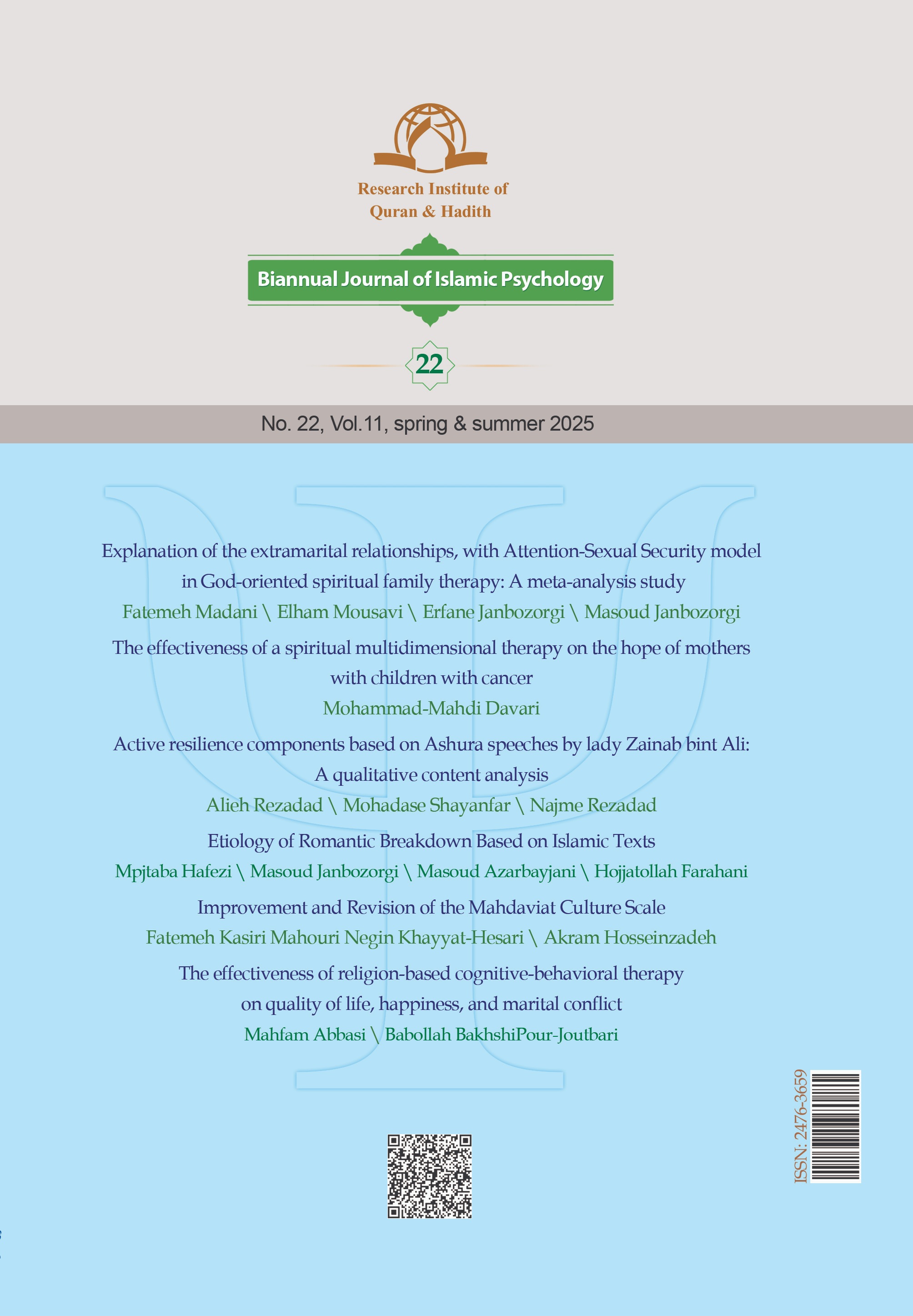Document Type : Scientific-research article
Authors
1
PhD student is Psychology, Department of Psychology, Faculty of Behavioral Sciences, Research Institute of Hawzeh and University, Qom, Iran
2
Professor at Department of Psychology, Faculty of Behavioral Sciences, Research Institute of Hawzeh and University, Qom, Iran
3
Associate Professor at Department of Psychology, Faculty of Humanities, Tarbiat Modares University, Tehran, Iran
Abstract
This study aimed to investigate the etiology of romantic breakdown based on Islamic texts and to assess its validity. For this purpose, a qualitative approach was adopted. Using the Semantische Felder method with a set of 142 relevant keywords, 1,053 religious statements were collected through purposive sampling based on the principle of saturation. These statements were subjected to a two-stage screening process. Next, selected texts were analyzed through Bengtsson’s qualitative content analysis method in four stages: Decontextualization, Recontextualization, Categorization, and Compilation. To ensure the trustworthiness of results obtained from Islamic sources, the four criteria of credibility, confirmability, transferability, and dependability were examined. To establish dependability, 10 experts were asked to assess findings derived from Islamic sources by calculating the Content Validity Index. The findings revealed that the etiology of romantic breakdown comprises of 21 subcategories, four categories (characteristics of human love, neglect of the true beloved, infatuation with worldly life, and sustaining cognitions), and two themes (causal factors and sustaining factors). These findings provide a suitable basis for understanding the etiology of clinical symptoms resulting from romantic breakdown, and for designing culturally adapted therapeutic interventions and educational programs.
Keywords
